Electromobility demystified
The world is transitioning to electro-mobility. As electric vehicles increasingly become part of our daily lives, enthusiasm for more sustainable transportation is growing worldwide.
Yet some people still have doubts, often driven by misconceptions and unsubstantiated claims. To separate the fact from the fiction, we debunk some common EV myths.
Myth #1
The ecological footprint of an electric car is as bad as that of an internal combustion car
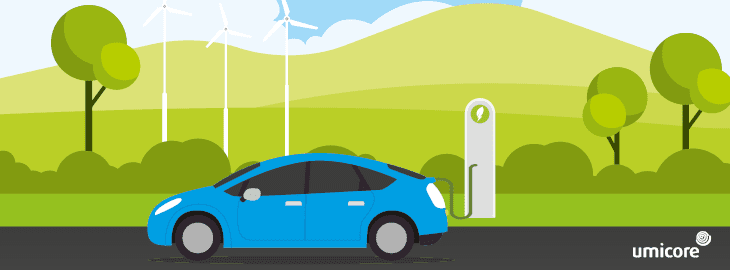
The total footprint of an e-car is smaller than an internal combustion engine vehicle today and will get even better.
To make a fair comparison, it’s important to look at the full life cycle of a car. The ecological footprint depends on both the production process and the emissions during use.
Over the vehicle life cycle, electric mobility plus increasing green electricity will deliver a lower overall CO2 footprint than internal combustion engine vehicles. Electric cars in the EU already emit almost 60% less CO2 on average today.
Myth #2
There won’t be enough electricity to charge a large number of electric cars.

Smart grids and gradually rising generation will ensure the electricity supply for e-car growth.
- Studies show that a million additional EVs in Germany would consume just 0.5% of total electricity demand.
- A UK analysis concluded that if one in three cars sold in 2035 is fully electric, then they would make up only 3% of electricity demand.
- Norway, global leader in e-car market share, shows there is no need to be concerned about the electricity supply.
- Owners will charge their cars when electricity is cheaper, for example overnight.
Myth #3
There aren’t enough raw materials to mass-produce batteries.
The battery industry is meeting current raw material demand and preparing well for ramp-up. Recycling will be key longer term.
Between now and 2030, over 340 million electric vehicles of all types could be produced, boosting demand for battery materials.
In Umicore’s cathode materials, the main metals are cobalt, lithium, manganese and nickel. Supplies of lithium and nickel must scale up. Demand will vary largely with the choice of cathode battery chemistry.
Substitution, better technology and recycling will help meet the metal demand. Umicore technology recycles nickel, lithium and cobalt at a high recovery rate (up to 95%).
Myth #4
Electric cars are impractical due to limited drive range, lack of charging infrastructure and long charging time.
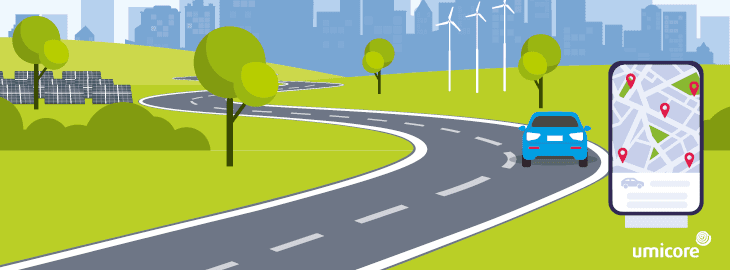
Improving battery technology has boosted drive ranges to over 500 km and fast-charging infrastructure is growing rapidly.
Drive range is increasing as battery energy density rises. Today some models can travel up to 550 km on a charge. This rise should continue.
The number of electric charging stations is growing rapidly. There were about 5.2 million worldwide at the end of 2018, up 44% from 2017.
Right now, fast chargers charge vehicles in less that half an hour. Rapid-charging stations are being installed every 120 km along Europe’s motorways. And don't forget: an EV can be charged overnight with a domestic socket.
Myth #5
Hydrogen is the future, not battery power.
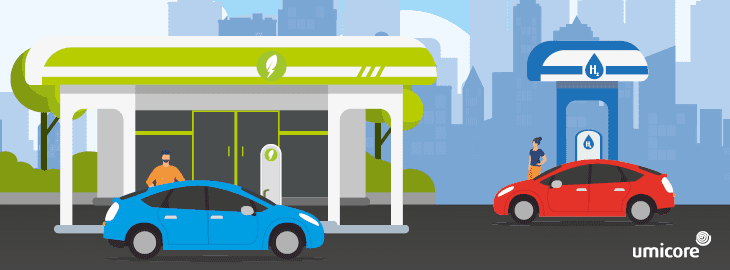
Hydrogen and battery vehicles will co-exist for different applications. The overall efficiency of battery wins out for most passenger cars.
Both have advantages and disadvantages. The technology will be matched with the application.
Fuel cell electric vehicles (FCEVs) require over twice as much energy as battery electric vehicles (BEVs) to drive the same distance. The overall “well-to-wheel” efficiency of an FCEV is 30%, while a BEV can achieve 77%. On the other hand, in general, the longer the route and the larger the payload, the more benefits hydrogen can offer.
Today only a few FCEVs are available. They won’t start to be mainstream until after 2030. This will require political will, lower purchase prices, and large-scale development of hydrogen refueling stations. In the short-to-medium term, BEVs will be the main carbon-free mobility solution.
Myth #6
Electric cars are too expensive compared to internal combustion engine cars.

Total cost of ownership for e-cars is approaching that of ICEs. Purchase price parity is expected within 5 years.
The total cost of ownership, combining both the purchase price and operating expense, is already similar for electric vehicles (EVs) and internal combustion engine (ICE) vehicles.
Additionally, a number of factors will soon lower EV purchase prices:
- Battery manufacturing costs are falling.
- Carmakers are designing innovative, simpler vehicle platforms for electric cars.
- EV subsidies for decarbonization are expected to expand.
Myth #7
Batteries are dangerous and can explode in an accident or during charging.
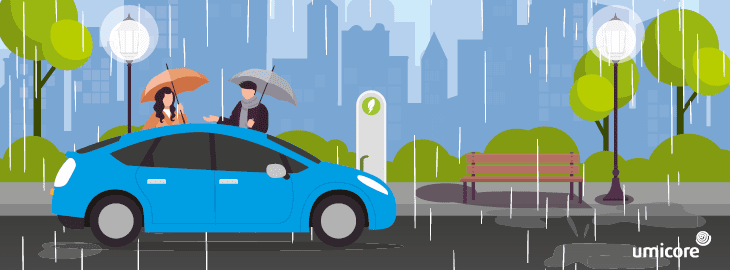
Battery electric cars are as safe as internal combustion cars.
All cars authorized for use must meet strict safety standards. Electric vehicles (EVs) are no exception. In 2010 the United Nations adopted Regulation 100. It ensures that cars with a high-voltage electric power train, such as hybrid and fully electric vehicles, are as safe as conventional cars.
Special safety systems prevent the risk of fire and electric shock. For example, in a crash the electricity flow from the battery is terminated immediately.
Furthermore, the battery is installed in a large, crash-proof block in the underbody, which protects it from deformation. Tests conducted by DEKRA, the European vehicle inspection company, have repeatedly shown that the risk of fire is far lower with an EV than with internal combustion engine cars.
Myth #8
Cobalt in batteries comes from mining operations that don't respect human rights and that use child labor.
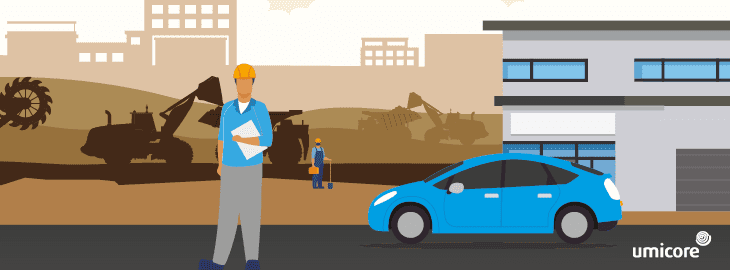
Umicore visits all mines it buys from and ensures that no unethical practices occur in its supply chain.
Umicore is aware of the risks linked to the sourcing of cobalt.
Umicore was the first company worldwide to create a framework to prevent unethical practices in its supply chain. Suppliers undergo an initial screening, as well as scheduled and unscheduled site visits. We assess such criteria as human rights, environment, and health and safety. This process receives an annual, third party validation. We are committed to continual improvement.
Our practices are also aligned with the OECD Due Diligence Guidance for Responsible Supply Chains of Minerals from Conflict-Affected and High-Risk Areas.

